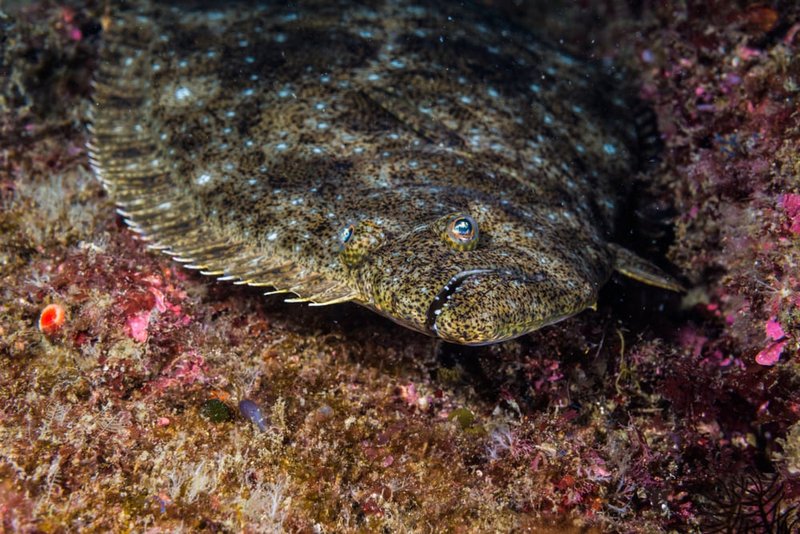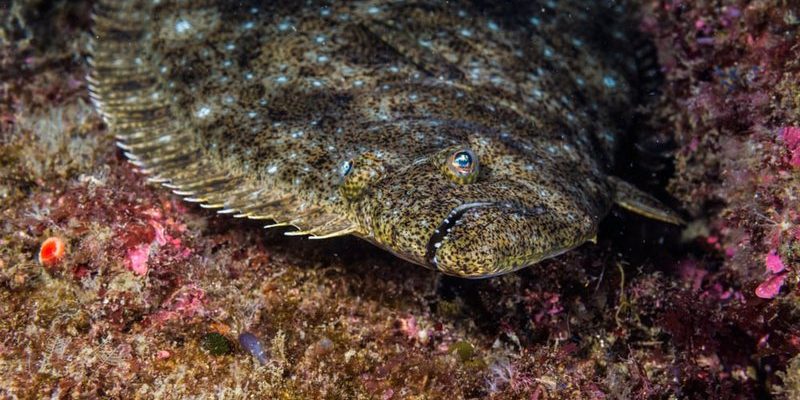
You might be familiar with the taste of halibut, especially if you enjoy fish and chips or grilled seafood dishes. But there’s so much more to this fish than just its culinary appeal. Think of halibut as the gentle giant of the ocean—physically impressive, yet surprisingly delicate. So, let’s unpack some fascinating tidbits about halibut. From its habitat to its fascinating biology, you’ll want to keep reading to learn all about this intriguing fish.
1. The Size of a Halibut Will Blow Your Mind
One of the most jaw-dropping facts about halibut is their incredible size. These fish can grow up to 8 feet long and weigh as much as 600 pounds! Just imagine a fish that could easily be mistaken for a small car. Their size alone makes them a prized catch for fishermen, but it’s also fascinating how they grow.
Halibut are born as normal fish, swimming upright. However, as they mature, they undergo a transformation. They shift to a flat shape and begin swimming on their sides. This adaptation serves them well in their ocean habitat, allowing them to blend in with the sandy ocean floor. So, if you’re ever fishing and catch one of these giants, remember—you’re pulling up a heavyweight champion of the sea!
2. They Have a Unique Hunting Strategy
Halibut are not just big; they’re also clever hunters. They have a remarkable method for catching their prey, which consists mainly of smaller fish, squid, and crustaceans. When they’re ready to eat, they lie in wait, camouflaged against the ocean floor.
Here’s the thing: halibut can change the color of their skin to blend in with their surroundings. This ability makes them nearly invisible to both their prey and potential predators. Then, in a flash, they strike! They use their powerful jaws and sharp teeth to snatch up their meal. If you think fishing is challenging, imagine trying to outsmart this crafty fish!
3. Halibut Are Masters of Disguise
As mentioned, halibut are incredible at blending in with their surroundings. But it’s not just about their color; it’s also about their shape. Their flat bodies make them look like a part of the ocean floor. This skill isn’t just for show—it plays a crucial role in their survival.
Their camouflage helps them hide from predators like sharks or larger fish. It also aids in their hunting strategy, making it easier to ambush unsuspecting prey. Just think about it: one minute you’re swimming happily in the ocean, and the next, you’re caught off guard by a fish that looks just like the sandy sea bed!
4. They Have a Long Lifespan
Halibut can live quite a long time, often up to 25 years or more. Some even reach ages of 50 years! That’s a pretty impressive lifespan for a fish. Their longevity can partly be attributed to their position at the top of their food chain.
In their early years, halibut are more vulnerable, but as they grow, they face fewer natural predators. This age allows them to grow bigger and, consequently, to reproduce more effectively. It’s a cycle of life that ensures they remain a vital part of marine ecosystems.
5. Halibut Have a Global Presence
Halibut aren’t just found in one place. They inhabit cold waters in both the North Atlantic and North Pacific oceans. In the U.S., they’re predominantly fished off the coasts of Alaska and California.
The two most notable species are the Pacific halibut and the Atlantic halibut. While they share many characteristics, they have distinct differences in size and habitat preferences. If you ever find yourself near a seafood market or restaurant, you may notice different types of halibut on the menu, each offering a unique taste experience.
6. They’re Not Just Delicious; They’re Nutritious
Eating halibut is great for your taste buds, but it’s also good for your health. This fish is loaded with essential nutrients, including high-quality protein, omega-3 fatty acids, and various vitamins and minerals.
Omega-3 fatty acids are particularly important because they support heart health and brain function. Plus, halibut is low in calories, making it a great option for those looking to maintain a balanced diet. So, next time you enjoy a halibut meal, know that you’re treating your body right too!
7. Halibut Fishing is a Big Industry
The fishing industry around halibut is massive, especially in regions like Alaska. It contributes significantly to local economies and provides jobs for many people. Halibut fishing is tightly regulated to ensure sustainable practices that protect fish populations.
Fishermen use various methods to catch halibut, including longlining and trawling. Longlining, in particular, involves baited hooks attached to a long line. It’s an efficient way to catch big halibut while minimizing bycatch, which refers to the unintentional capture of other marine life. Sustainable fishing practices ensure future generations can enjoy this fantastic fish.
8. Halibut Are a Cultural Icon
In many coastal communities, halibut holds cultural significance. For some, fishing for halibut is a cherished tradition passed down through generations. It symbolizes not just a food source but a way of life.
Festivals and events often celebrate halibut, bringing communities together to honor their connection to the sea. You might even find halibut-themed recipes made for special occasions. It’s more than just a fish; it’s part of the cultural tapestry of many seaside towns.
9. They’re Slow to Grow
Unlike many other fish, halibut have a slow growth rate. Even in optimal conditions, a halibut may only grow a few inches per year during its early life. This slow growth can be attributed to various factors, such as water temperature and food availability.
Because of their slow growth, it takes time for halibut to reach maturity and become reproductive. This aspect is crucial for understanding their population dynamics and the importance of conservation efforts. You might be wondering why this matters; well, it underscores the need for responsible fishing practices!
10. Halibut Can be a Bit of a Mystery
Despite all we know, there are still many things researchers are uncovering about halibut. For example, their migratory patterns and breeding habits are not as well understood as one might think. Scientists are still studying how environmental changes affect them, including climate change, which could impact their food sources and habitats.
Understanding these mysteries helps protect halibut populations and the future of fisheries. So, whether you’re fishing for them yourself or enjoying their delicious taste at a restaurant, there’s a lot more to halibut than meets the eye.
In conclusion, halibut is more than just a meal on your plate. It’s a fascinating creature with intriguing traits, important for both ecology and culture. Next time you enjoy some halibut, think about the journey it took from the ocean to your table. Whether you’re a seafood lover or a curious learner, halibut has a unique story waiting for you to discover.

